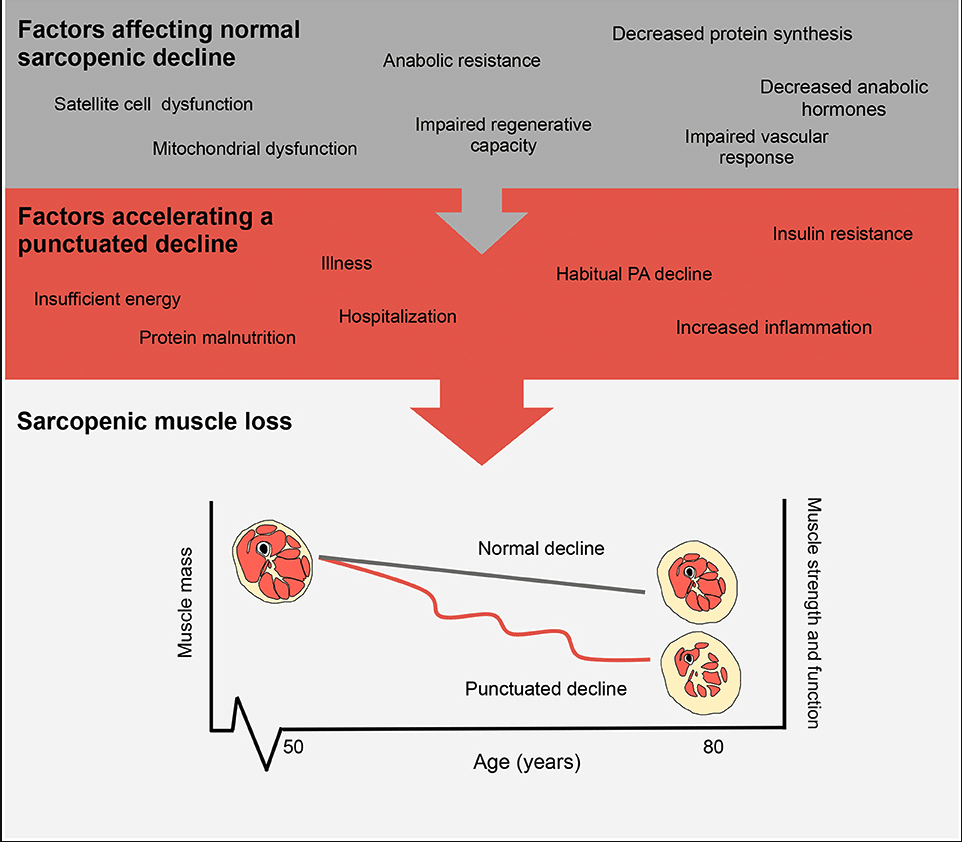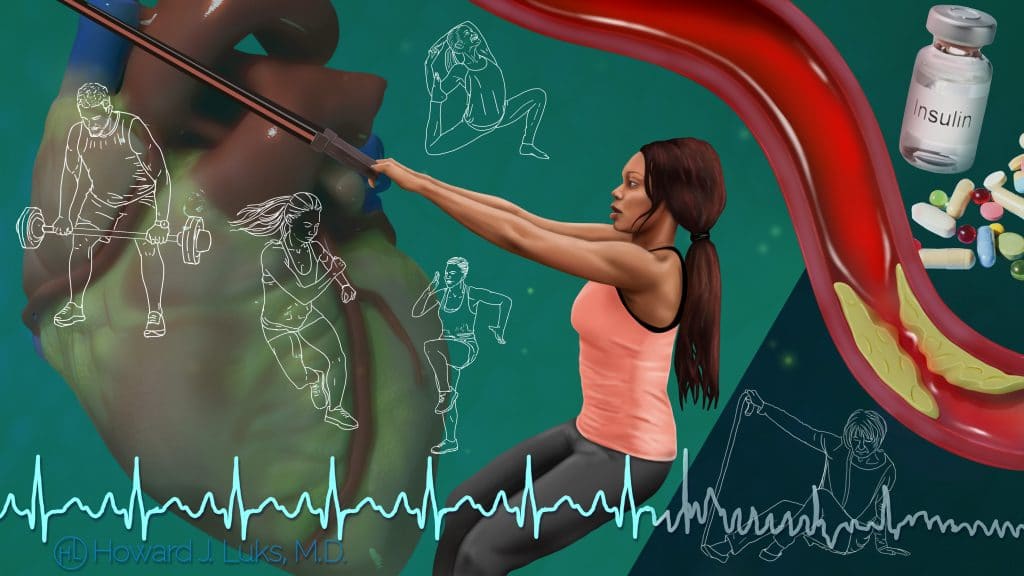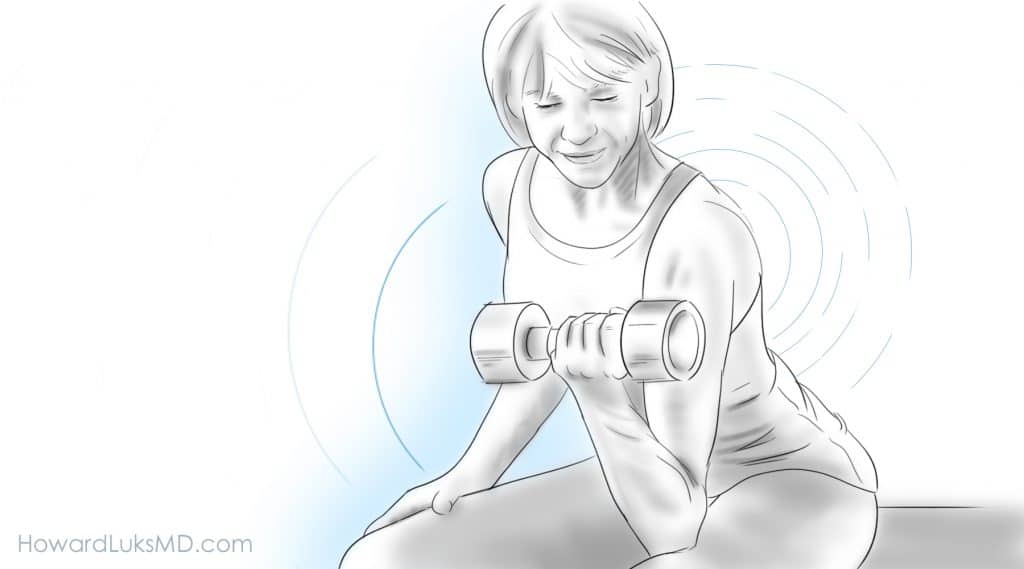
When optimizing our health and longevity, prioritizing muscle mass and muscle strength is a critically important consideration. Our muscle mass and strength decline with age. The changes that occur to our muscles as we age can be profound. As we will discuss, these changes can dramatically affect our health. Muscle mass starts to diminish as early as our 30’s. That’s not old!
For the longest time, science told us we only had to move more to improve our health. Over the past decade or two, it has become very apparent that resistance training is equally important. As we age, it is not easy to maintain our strength and power. As we will explore in this piece, this can significantly impact our ability to move across the landscape without effort, avoid falls, and help maintain proper metabolic health and glucose control.
Muscle mass loss and the corresponding decreases in muscle strength ramp up dramatically as we enter our 60s. If we do not prioritize our muscle strength and muscle mass when we are younger, then the risks of muscle loss multiply and are harder to overcome as we age. This post will cover how muscle mass affects our overall health, why we lose muscle as we age, and how we can fight against these changes.
For those who prefer to listen to a podcast version… here you go :-)
Sarcopenia should be a four-letter word:
Sarcopenia is a fancy word for age-related loss of muscle mass. Sarcopenia, or the decline of skeletal muscle tissue with age, is one of the most important causes of functional decline and loss of independence in older adults. Sarcopenia starts to appear in our 40s!!! Loss of muscle mass is predictive of a shorter lifespan and worse recovery after injury or surgery. The causes of sarcopenia are debated, but it appears to be multifactorial, with neurological decline, hormonal changes, chronic inflammation, sedentary behavior, chronic illness, and poor nutrition all looking to be related and contributing to the decline.

Our muscle tissue accounts for more than 50% of our body mass. Our muscles are essential from a metabolic perspective. Loss of a highly metabolically active tissue can have dramatic consequences for adults. Muscles help us control our glucose levels, use glucose as fuel, and have a role in insulin resistance and type 2 diabetes. Loss of muscle mass contributes to poor health outcomes, fatigue, loss of function, disability, fall risk, frailty, and death.
I hope I have convinced you that maintaining or building muscle mass is essential. Let’s dive deeper.
Muscle Synthesis and Muscle Breakdown
Muscle mass and protein synthesis are in a constant state of flux. Our body continually breaks down muscle protein (MPB) and rebuilds or synthesizes muscle protein (MPS). When MPB exceeds MPS, we start to lose muscle mass. This occurs on a micro-level (daily shifts) and a macro-level (long-term shifts). Every night, our MPB exceeds our MPS. That’s how rapidly this system changes. Achieving a situation where muscle protein synthesis exceeds muscle protein breakdown is essential to combat the changes that occur with aging and inactivity.
Building muscle mass is a very complex topic, but it can be simplified for this discussion and format. The three areas that we are going to focus on are:
- Diet and appropriate protein intake.
- Resistance exercise
- Dietary supplements to enhance muscle mass and muscle protein synthesis.
This is an all-or-none issue. We need to be sure that we are getting enough protein in our diet to stay in proper nitrogen balance. Your nitrogen balance is a fancy way of saying that you must ensure you have taken in enough protein. Protein ingestion gives you the building blocks necessary to synthesize muscle protein.
Resistance exercise is critical, too. You need to challenge your muscles if you expect to keep them. Muscles will respond to load or force regardless of your age. Yes, a 20-year-old can build bigger and stronger muscles than an 80-year-old. But an 80-year-old will grow larger muscles if they perform resistance exercises. You cannot assume that supplements work alone without proper nutrition and exercise.
How is muscle mass associated with longevity?
Muscle and fat are two highly metabolic tissues. How our tissues interact with our metabolic machinery matters. Visceral or belly fat is very toxic to us, and we should seek to minimize the amount that we have. Visceral fat is responsible for considerable chronic disease states such as type 2 diabetes, heart disease, and fatty liver (NAFLD). On the other hand, muscles improve our ability to manage glucose and dispose of glucose, and muscles have a role in mediating the severity of insulin resistance. Exercise is prescribed to people with insulin resistance or type 2 diabetes to improve glucose control and their overall metabolic dysregulation.
Muscle mass correlates with a decrease in all-cause mortality. Simply put, the more muscle mass you have, the lesser the risk of dying from a chronic disease than some of your peers. It turns out that just one hour of resistance exercise each week leads to a decrease in all-cause mortality risk. One hour! One hour :-) You can do that!
Does muscle mass improve your cholesterol profile?
While muscle mass may not lower your cholesterol level, you must consider the big picture. In general, if you are conscientious enough to start a resistance exercise program to build muscle mass and improve your health, then you are equally as likely to engage in other lifestyle changes to improve your health. This is how muscle mass is likely associated with improvement in your overall metabolic health, the risk for chronic disease, and your lipid (cholesterol) profile. For example… In one of my recent posts, we discussed how your Triglyceride: HDL ratio can predict your risk of having insulin resistance and type 2 diabetes. If you exercise to increase your muscle mass, you may increase your HDL. If you are now more conscious of your health and minimize simple carbohydrate intake, you will lower your triglycerides. That will decrease your triglyceride: HDL ratio and improve your overall metabolic profile. The same goes for our diet and lifestyle in general. Anyone who is willing to initiate a resistance exercise program is also likely to engage in dietary changes that will improve their health.
Fall risk, frailty, and demise: the role of muscle mass
The basic pillars of an exercise program include aerobic conditioning, resistance exercise, high-intensity exercise, and balance training. Yes, balance training. While chronic disease sets the stage for our decline as we age, what ultimately leads to frailty and our demise is the risk of falling, and the injuries sustained from falling. Weakness and loss of balance increase our risk of falling. Each fall becomes progressively harder to recover from. Eventually, you might fracture your wrist, shoulder, or hip. Sadly, 50% of you might die within a year of suffering a hip fracture.
Minimizing our risk of falls and injury following a fall is directly related to our muscle mass, strength, and balance. Our muscle mass and strength also speed up our recovery after a fall or injury. Our muscle mass starts to diminish in our 40s! Sarcopenia is a brutal reality that requires active effort if we are going to try and break the cycle of decline in our function that starts to appear in our 50s. Exercising when we are younger induces epigenetic changes that will affect lifespan. An epigenetic modification refers to the effects that exercise and muscle mass have on your DNA expression. We have 10s of thousands of genes in our DNA. Not all of them are turned on. Exercise leads to some of those genes being turned on (an epigenetic change), and those genes might decrease your risk of cardiovascular disease, insulin resistance, premature aging, neurocognitive decline, and so on. It is, therefore never too early to initiate and stick with a resistance exercise program.
How to improve our muscle mass
There is no easy answer here. Preventing the age-related loss of muscle mass will require effort. We need to push and pull heavy things. Recent research has shown that one bout of resistance exercise leads to muscle growth in 90-year-olds. So, it’s never too late to initiate a resistance exercise program. I often hear that folks are afraid of hurting their back or something else from exercise. Well, we know that exercise does not worsen osteoarthritis. We know that everyone will experience back pain or shoulder pain, etc., throughout their lives. However, the risks of not performing exercise outweigh the risks of exercise.
To initiate a resistance exercise program, you need some guidance. Which muscles should you exercise? That depends on what you are prioritizing. You want to exercise your legs, thighs, calves, and glutes for longevity and fall risk. Those are our largest muscles and will have the most significant impact on our metabolism. Those are also the muscle groups that will minimize our risk of falling. I have seen 80-year-olds squat. I have seen them try and push a sled across a floor at the gym. Just watch RBG in her video when she attends CrossFit.
For younger folks, I know working out legs is annoying for many. Try to embrace it. Squats, hip hinge exercises, and calf raises should be part of your routine. Runners, you must concentrate on calf exercises. Both seated and straight leg calf raises so you hit both your gastrocnemius and soleus muscles. Our calf muscles are one of the first to succumb to the changes brought by sarcopenia. It is essential to focus on them during our resistance exercise training.
Supplements for maintaining muscle mass
There are no magic bullets. For those of you who are exercising, there is a fair amount of scientific literature to support the use of creatine to build muscle mass. I use creatine from Thorne. They seem to be the most reputable. Creatine works by getting into the muscle cell and bringing water with it. So, you are enlarging the size of each muscle cell. A larger muscle cell can generate more force. A more massive muscle is physically capable of helping you avoid injuries following a fall. Creatine will raise your blood creatinine levels, so tell your doctor if you are taking it. This is a false elevation of creatinine. Creatinine tells us how well your kidneys are working. If it rises, then your kidney’s ability to filter out your blood is diminishing. Creatine-related increases in blood creatinine levels do not mean kidney function diminishes. The creatine itself is metabolized into creatinine and thus can cause an elevation in your blood levels of creatinine.
Adequate protein intake is critical. Eating enough protein gives your body the building blocks it needs to improve muscle protein synthesis. A useful basic guide is that you need 1-1.5 grams of protein per kilogram of body weight daily. Protein is made up of amino acids. They are the building blocks. It turns out that of all the available amino acids, Leucine is the most important. Leucine is necessary and sufficient for adequate muscle protein synthesis, assuming a basic minimum of the other amino acids are available. I supplement my protein intake because it is hard to hit my target during the day without a protein shake.
There are many recommendations online about how much protein you need to meet your daily requirements. Those requirements increase as we age. We need more protein to combat sarcopenia, and we need more protein because our muscle-building machinery is not as efficient. A reasonable guide for an average-sized person is to get 20-30 grams of protein per meal. That assumes you are eating three meals. Based on recent literature, 10 grams of whey protein + 5 grams of Leucine will have the same effect as 26 grams of whey protein with respect to muscle protein synthesis.
I often hear from patients in the office that they are afraid to exercise. They are so scared of hurting themselves. That is a reasonable fear. Injuries might happen if you perform resistance exercises. But you should fear the effects of sarcopenia more. You should fear the onset of frailty more. There is nothing worse than seeing someone inch along with a cane because they have lost their balance and strength. Their risk of decline and demise is far higher than your risk of injury.
And if you are concerned… of course, you should discuss this with your doctor or cardiologist.
Can you handle resistance exercises? Probably. Should you check with your cardiologist first? Probably. Especially if you have a history of heart disease or shortness of breath.
There are affiliate links in this article. I will be paid a very small amount of money if you utilize them.



















Thank you
Great article Howard. Thank you!
Best regards,
Jacky Ledeboer ( physiotherapist Netherlands)
Dr Howard Lukes
It’s always helpful to read your articles. I am an orthopedic Physician Assistant practicing in Kenya. The articles you write are my armory of medical education for my day to day practice.
Good work and God Bless
Thank you!!
For the first time in my readings, i come across a smooth approach for exercising techniques. The many advises you have enlighten makes me assured that keeping on exercising is essential to our health despite the possible pains or deceives .
Thank you for such an analysis, it feels better after reading it
Very interesting article Dr.Luks
I live in Switzerland and am 67 years old, I do a lot of sport but find it hard to build muscle mass these days, maybe I’m not getting enough protein as the building block, should I be eating more steaks for example , as these have basically disappeared from my diet since my wife went Vegan,
Thanks
Alan
Hello…
Vegans can produce muscle too :-). You do need to make sure you get enough protein. Around 1.6-2 gms of protein per kg of body weight is good for most people. Hopefully a local physician or nutrition specialist can help you achieve adequate protein intake despite being on a vegan diet. You can see this post on my site with some suggestions too.